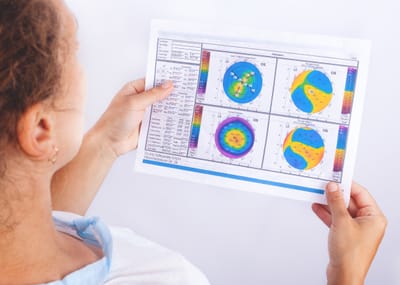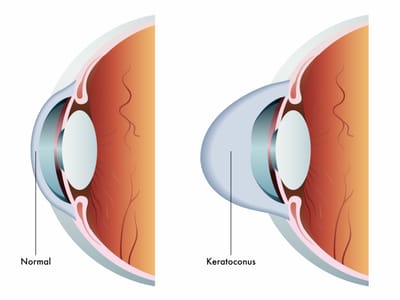Collagen Cross-Linking


What is Keratoconus?
Keratoconus is an eye condition in which the round, oval-shaped cornea becomes thinner over time and develops a cone-like bulge, resulting in high levels of astigmatism (irregular curvature) and nearsightedness. It is estimated that keratoconus occurs in one out of every 1,000 people in the general population.
How Does Collagen Cross-Linking Work?
Collagen is a structural protein that provides strength and firmness to the corneal tissue. Cross-linking works by forming new cross-links between collagen fibers, which are the natural “anchors” within the cornea. These anchors are responsible for preventing the weakened cornea from bulging out and becoming too steep or irregular. The addition of these cross-links acts like adding rungs on a ladder, strengthening the cornea and allowing it to focus light more efficiently and accurately.
How is Collagen Cross-Linking Performed?
After numbing drops are placed on the eye to ensure patient comfort, the Vitamin B2 (riboflavin) drops are then instilled in the eye for approximately 30 minutes. Once the corneal stroma is fully saturated, the eye is illuminated by ultraviolet light in order to activate the bond between the collagen fibers, with continued drops of riboflavin. This process typically lasts 30 minutes, depending on the specific patient’s condition.
What to Expect
In order to treat Keratoconus with cross-linking, the patient must have an initial consultation to determine if they are a good candidate for corneal cross-linking. The thickness of the cornea is a key factor on whether the patient is able to receive this treatment, and a corneal topography of the cornea will also be used to determine the level of the condition.
What are the benefits of Collagen Cross-Linking?
- Slows or stops the progression of keratoconus
- No incision, no injection, no stitches
- Only requires a single treatment
- Quick recovery time



